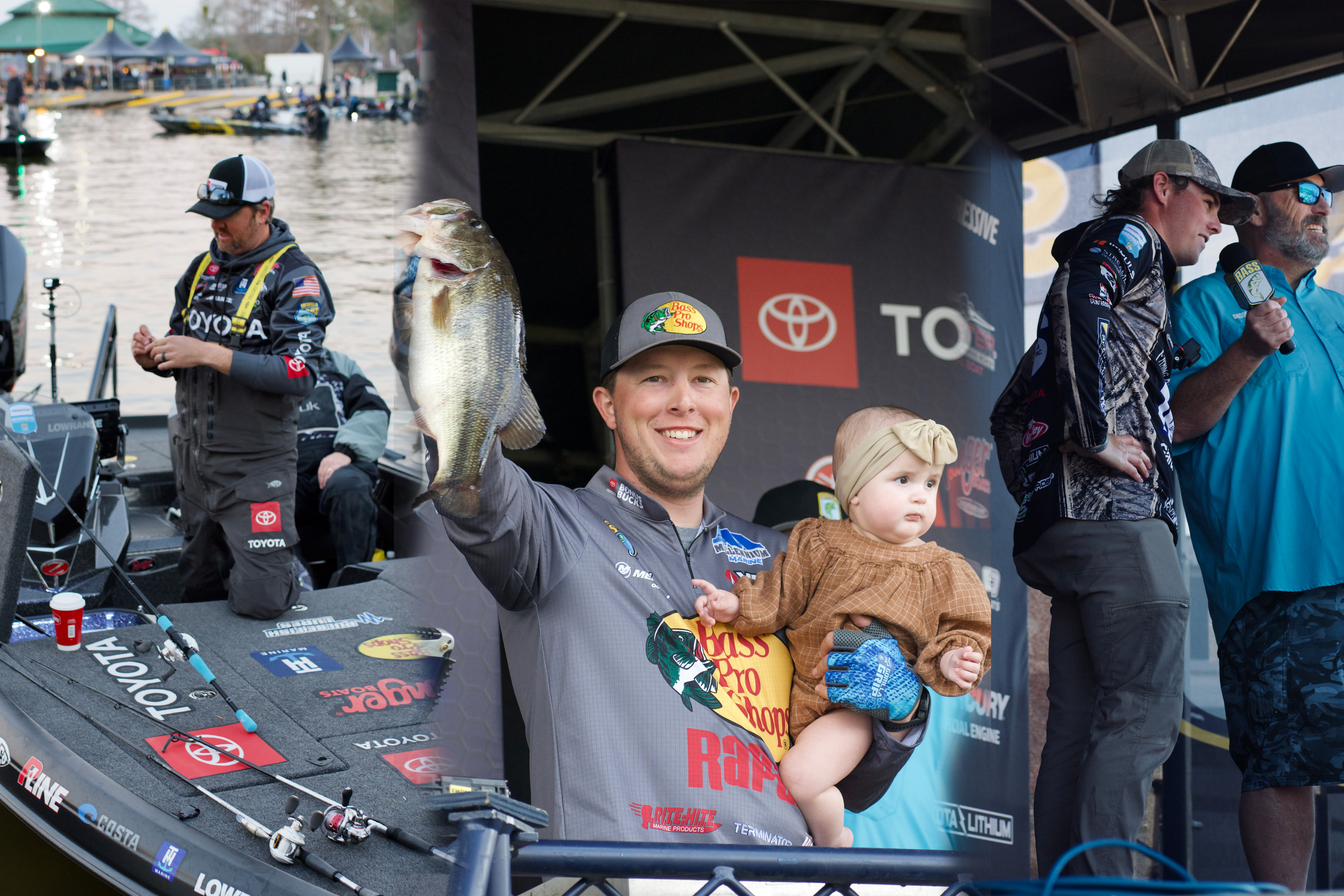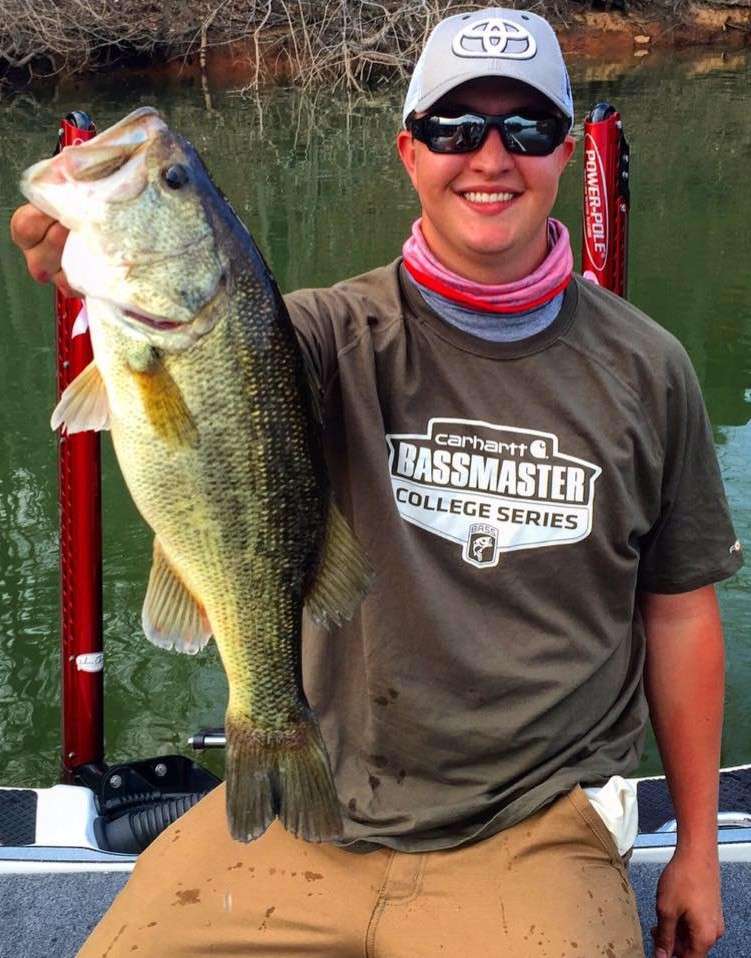
The fifth stop of the Bassmaster Elite Series season was set to begin this morning on scenic Lake Murray in South Carolina before severe thunderstorms forced B.A.S.S. to wisely postpone day one until Friday, May 10th. Even before the weather curveball, angler reports after practice paint the picture of a tougher Lake Murray than the Elites experienced in late April of 2023.
Pro anglers are also professional sandbaggers, but the general consensus is that the bass are being stingier this year due to several factors including, but not limited to: the bass, blueback herring, and shad being at the tail-end of their spawn, this event being a few weeks later in the year, post-spawn funkiness, storms, and a 13-year cicada hatch, dubbed Brood XIX, affecting the dinner menu for resident bass.
To sift through the dock talk, we caught up with former college fishing standouts and Toyota Bonus Bucks contenders Cody Huff and Logan Parks as well as Team Toyota pro Matt Arey to ask about their expectations before competition begins.
Q – Last year it took over 17 lbs per day to make the top fifty cut. Will it take more or less weight to make Saturday’s cut this week?
Cody Huff – “I would think less, last year there were still a lot of spawning bass and herring up shallow. Both of those things are still going on this year, but not nearly as many groups of fish doing either of those deals. That alone makes the fishing a little tougher.”
Logan Parks – “I’m going to hope less. I didn’t fish this event last year, but I watched the coverage and was super excited to fish this lake… but it seems like the fish are in that weird post-spawn funky mood.”
Matt Arey – “I think a pound or so less. There are still a lot of big bass in here, but these fish get harder and harder to catch every time I come to this lake. We’re also here a couple of weeks later which has pulled a lot of fish from shallow water.”
Q – Lake Murray is known for its blueback herring population; do you approach bass fishing differently on fisheries with herring as a primary forage?
Huff – “I do for sure. Herring move so much more than your typical bait fish, and when they cross paths with bass, the bass get fired up. I move around a lot more and try to find the active fish on these herring lakes more than I typically would.”
Parks – “I don’t have a ton of experience fishing herring lakes, but the fish seem to act different. They are lean, long, and strong cause they are always chasing those baitfish. Generally, I find myself fishing a little faster.”
Arey – “100% yes. Herring act differently than threadfin shad, so you as a fisherman have to act a little different as well. It can be a total feast or famine deal on these lakes, but you sometimes have to chase the herring. ‘Cause it is not easy to catch those bass without them.”
Q – The massive cicada hatch has been quite the buzz this week, figuratively and literally. We know bass eat them, but how much money would it take for you to eat one?
Huff – “Hmm… It would be a pretty fair amount. They are large, juicy bugs. The sound they make when you step on one, I couldn’t imagine that in between my teeth, so it would take a lot. But I’d eat one for a limit of five-pounders each day.”
Parks – “I’d probably eat one for $10,000.”
Arey – “Eww… I’m not a bug eater, man. It would take a lot of money. If it’s dead and cooked, $10,000. If it’s alive and buzzing it would take six figures.”
Q – What are two lures/techniques you believe will play a major role in this tournament?
Huff – “Big walking topwater bait and a fluke-style bait will be players.”
Parks – “I’m going to say a Berkley Magic Swimmer (jointed swimbait) and a drop shot. Opposite ends of the spectrum.”
Arey – “Soft plastic jerkbait and a walking topwater bait. Blueback fishing 101.”





